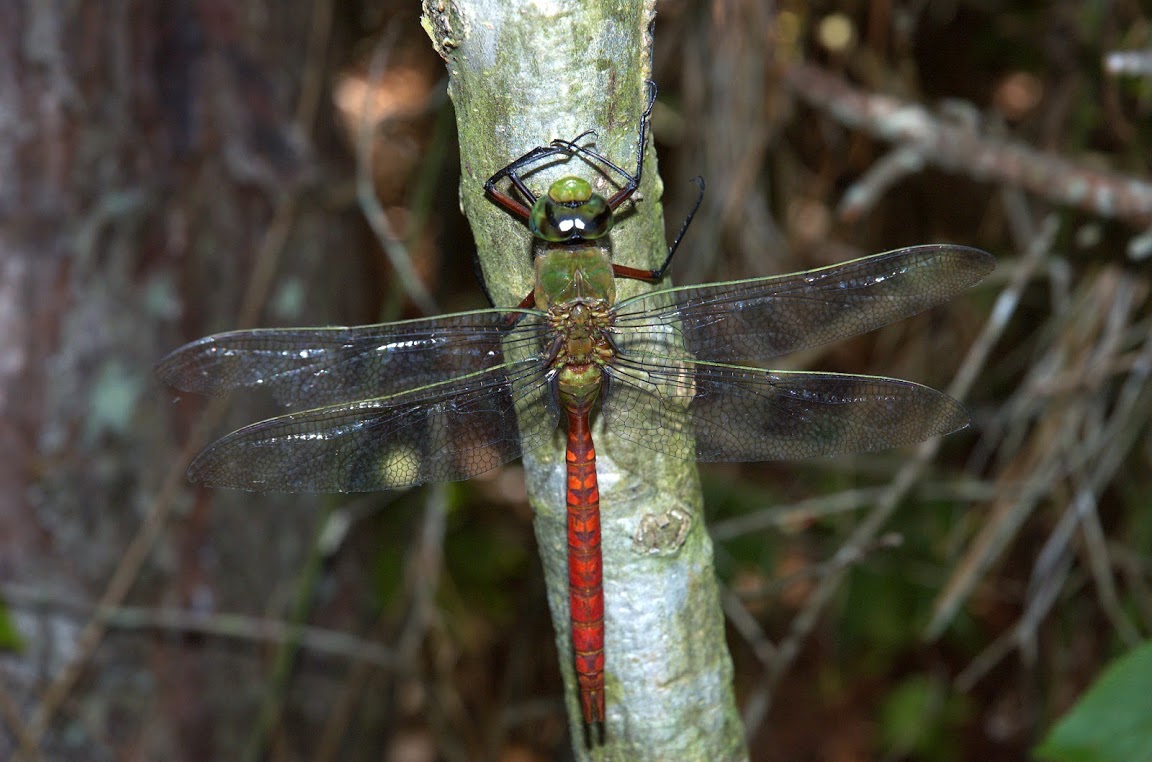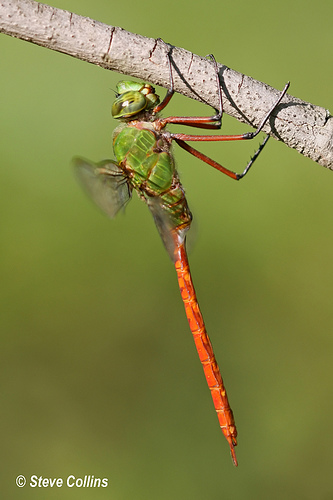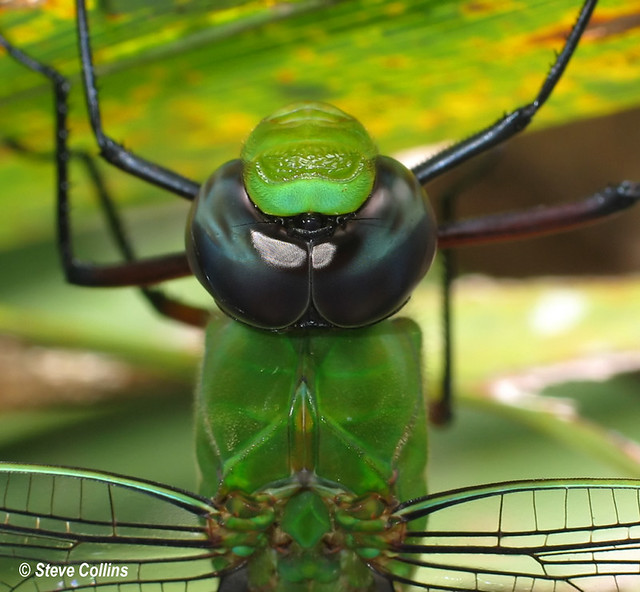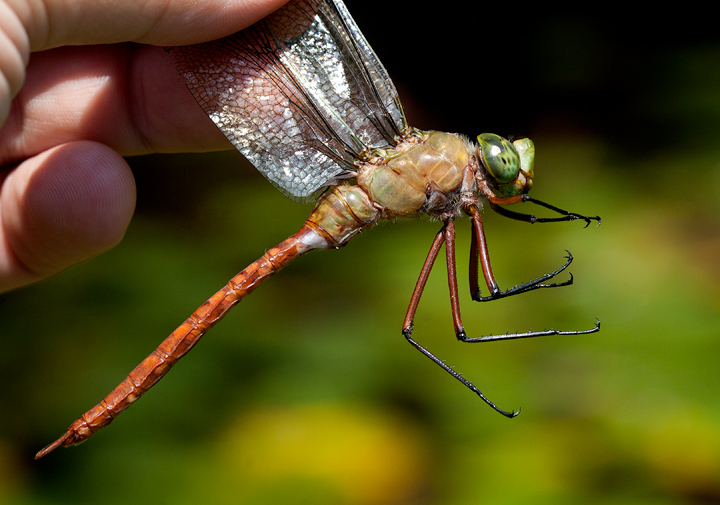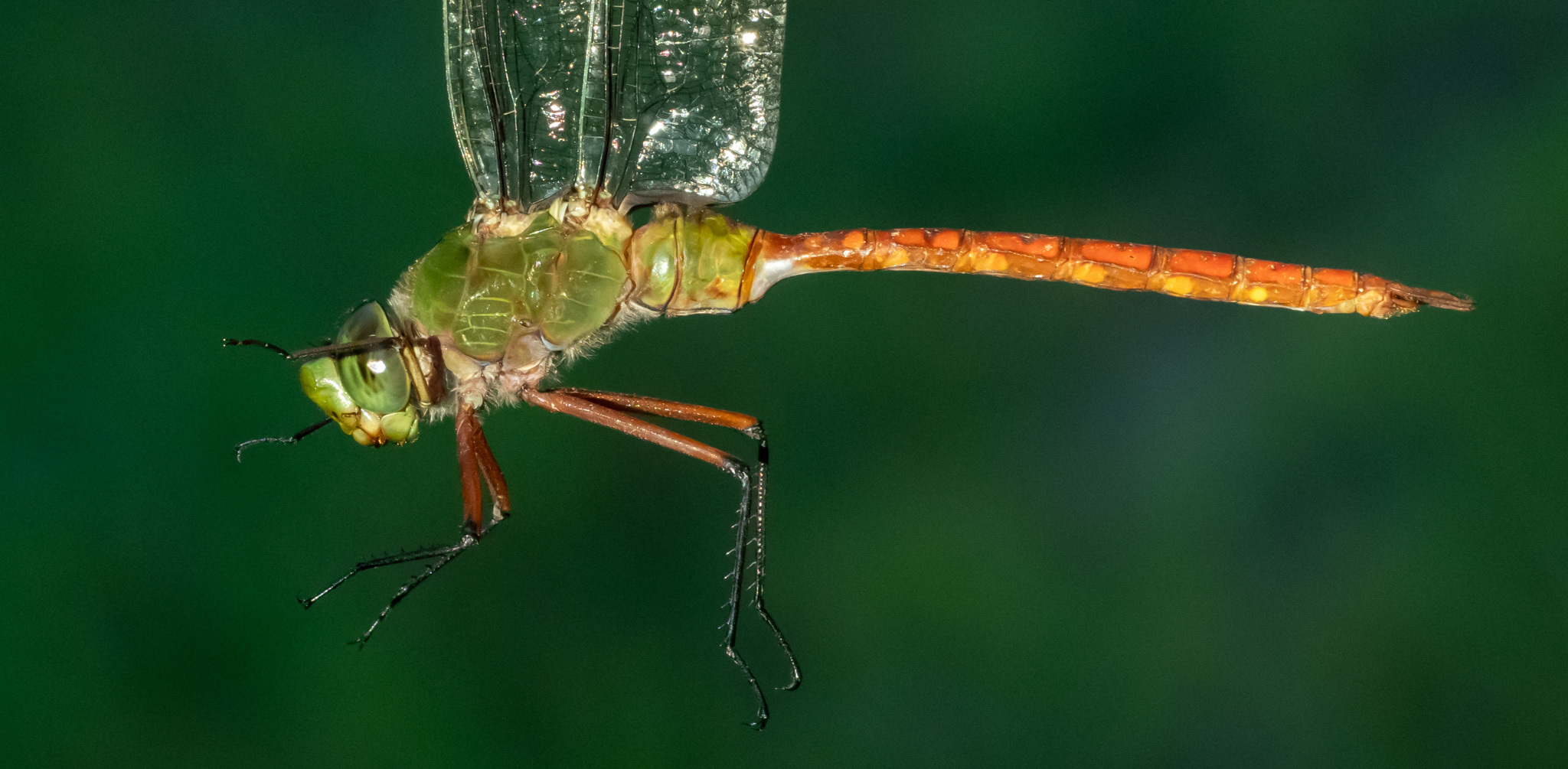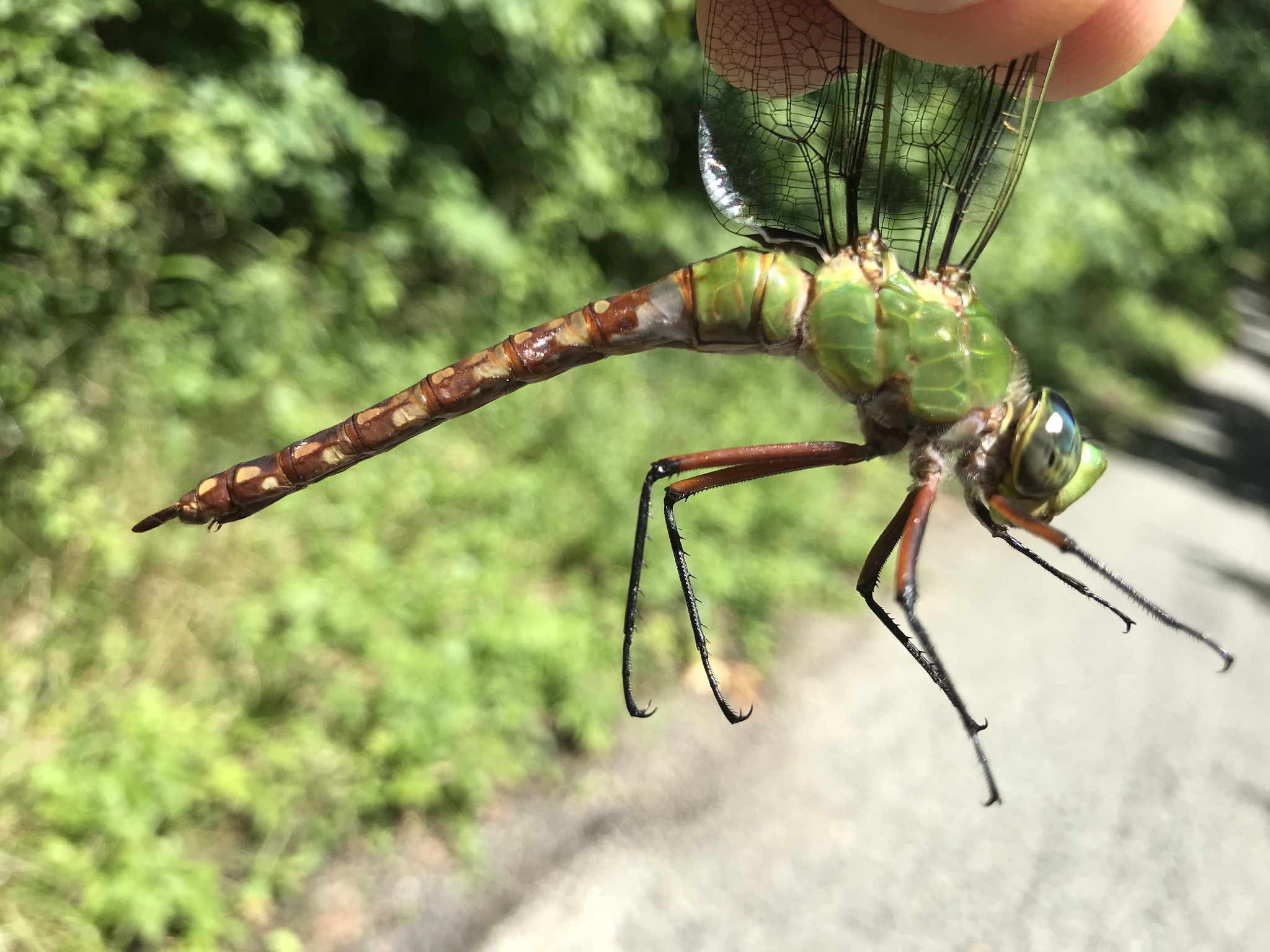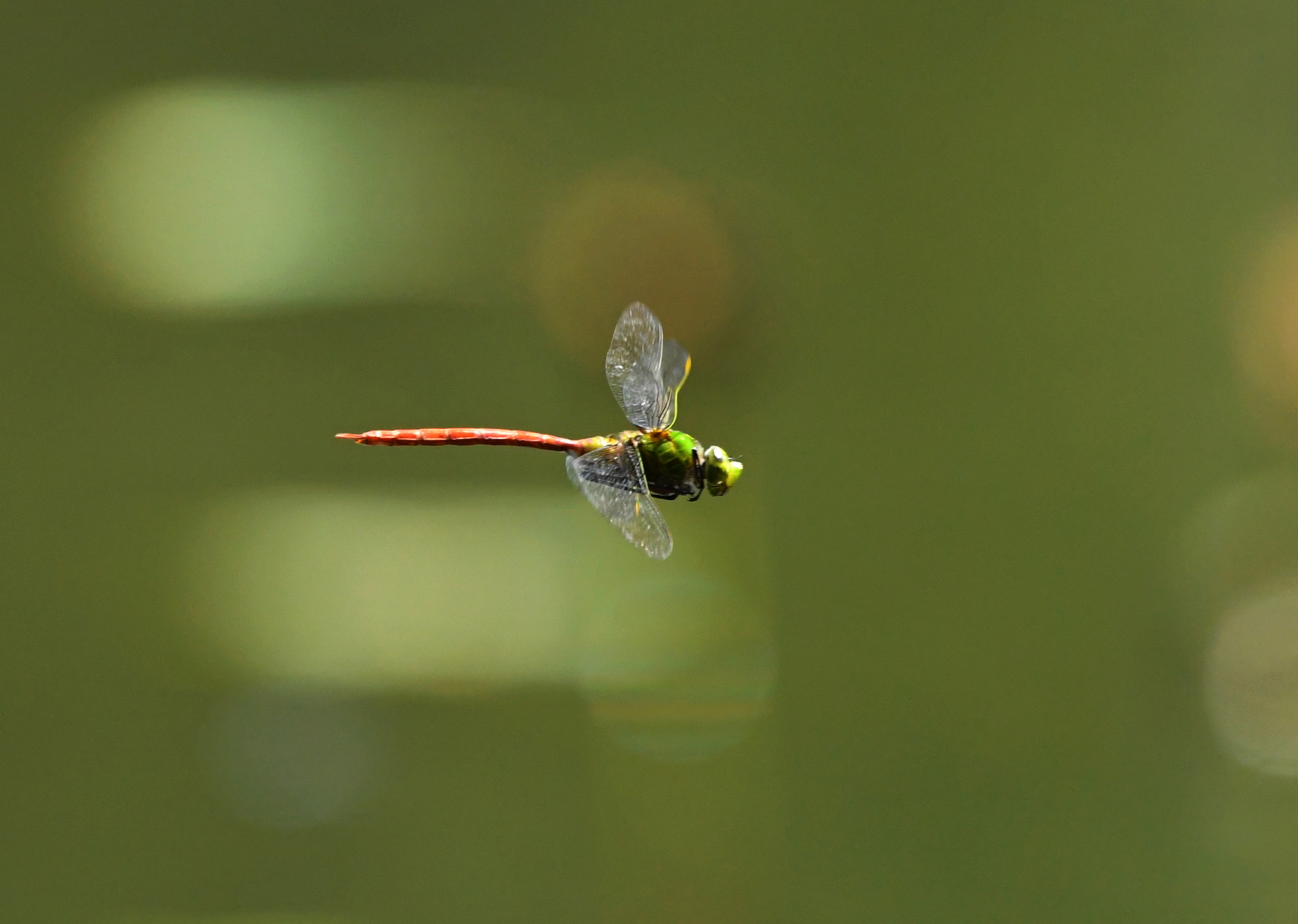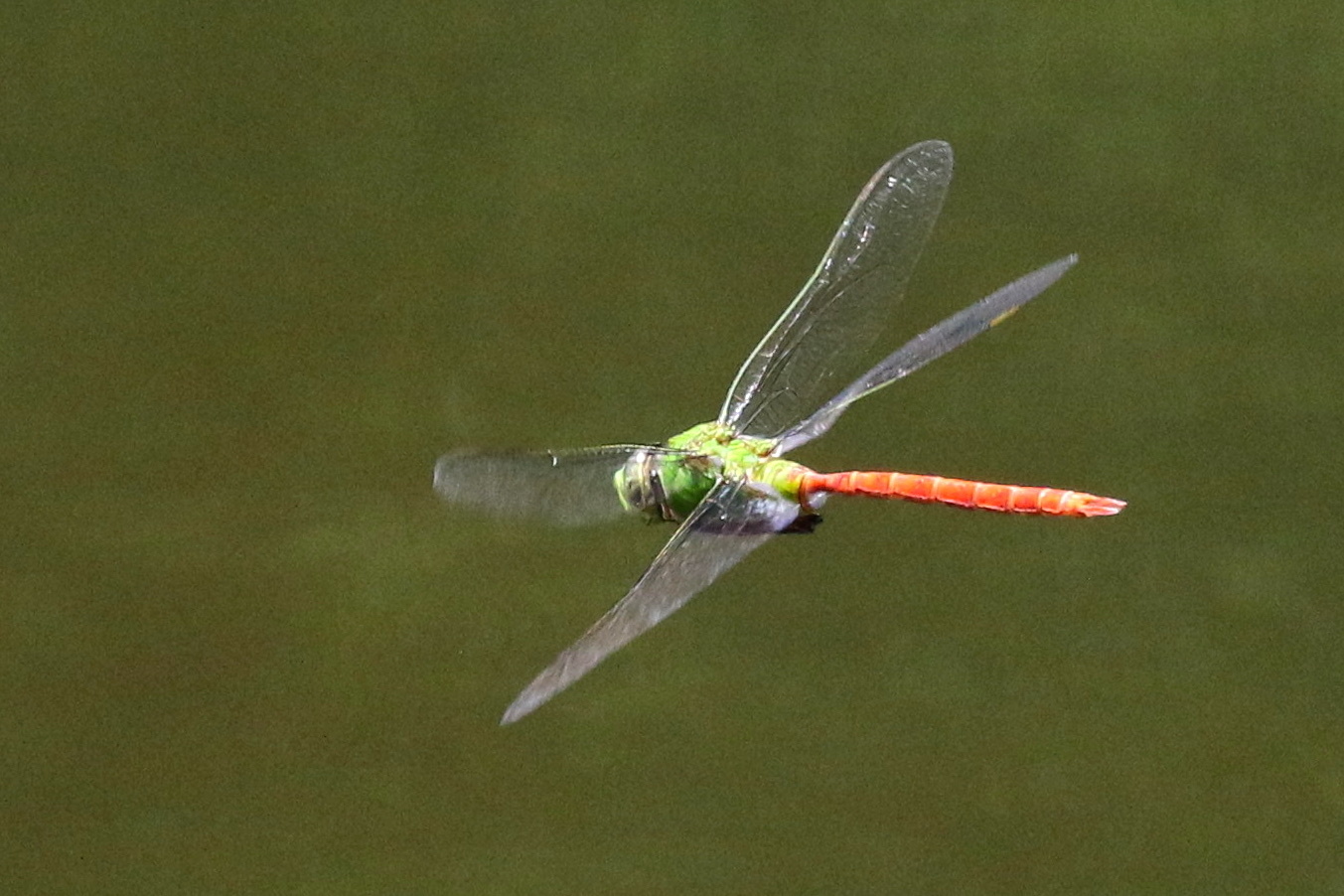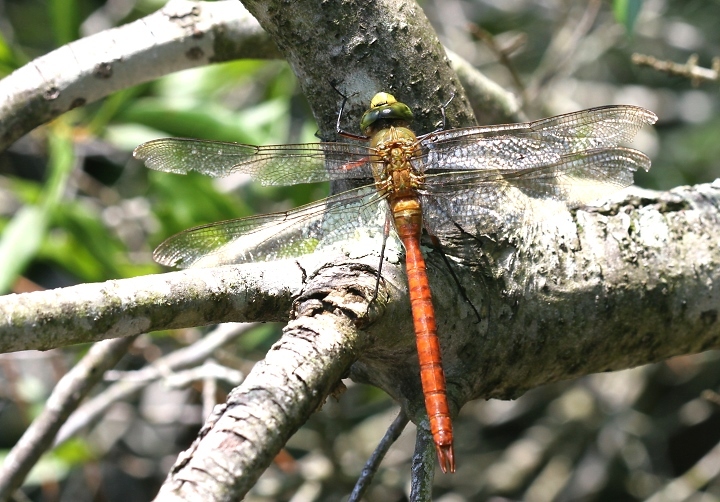Map Snapshot























344 Records
Status
The distinctive Comet Darner (Anax longipes) is nearly unmistakable, with a pale green thorax and, in mature males, a brilliant reddish-orange abdomen. This showy dragonfly is a strong flyer, and often takes large prey, capturing them in flight with its exceptionally long legs. Comet Darners prefer to breed in fishless ponds, including gravel pits ponds, farm ponds, and beaver meadows. This dragonfly is widespread, but generally uncommon across most of Maryland (Richard Orr's The Dragonflies and Damselflies of Maryland and the District of Columbia).
Seasonality Snapshot
Source: Wikipedia
| Comet darner | |
|---|---|

| |
| Male | |
| Scientific classification | |
| Domain: | Eukaryota |
| Kingdom: | Animalia |
| Phylum: | Arthropoda |
| Class: | Insecta |
| Order: | Odonata |
| Infraorder: | Anisoptera |
| Family: | Aeshnidae |
| Genus: | Anax |
| Species: | A. longipes
|
| Binomial name | |
| Anax longipes Hagen, 1861
| |
The comet darner (Anax longipes) is a common species of dragonfly of the family Aeshnidae.
Description
[edit]The comet darner is a large dragonfly and has a green thorax and bright red abdomen. Females have a brownish abdomen patterned with blue spots.[2]
Distribution and habitat
[edit]Comet darners are found in shallow lakes and ponds which tend to have extensive beds and grasses and lack fish. They are found along the eastern United States from Missouri, Michigan, New England and some even further north.[3]
Conservation status
[edit]Its conservation status is of "least concern" according to the International Union for Conservation of Nature.[1]
References
[edit]- ^ a b Paulson, D.R. (2017). "Anax longipes". IUCN Red List of Threatened Species. 2017: e.T164953A71148798. doi:10.2305/IUCN.UK.2017-3.RLTS.T164953A71148798.en. Retrieved 19 November 2021.
- ^ Comet Darner: Anax longipes Hagen, 1861
- ^ Paulson, Dennis (2009). Dragonflies and Damselflies of the West. p.233.


